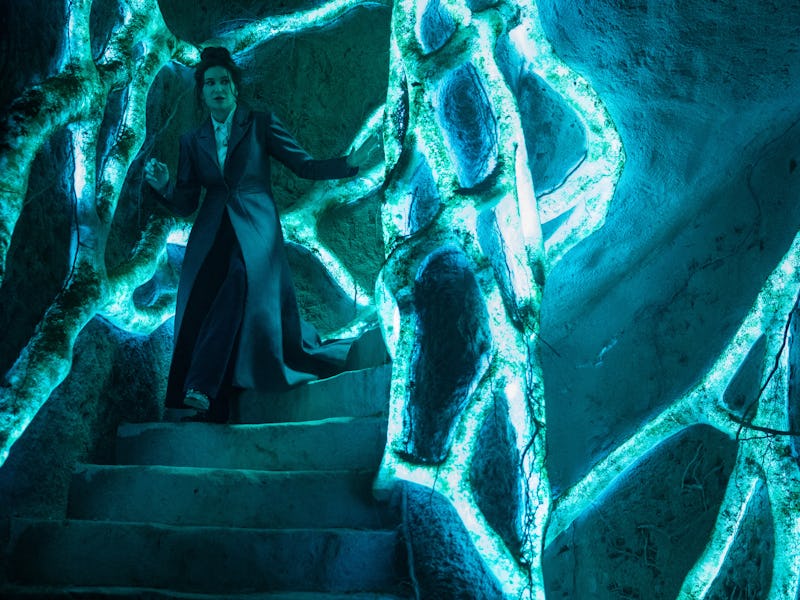The Witches' Road? Why Agatha All Along’s Setting is So Different From the Comics
Where all that’s wrong is right, and all that’s bad is good.

Agatha All Along is moving the action out of Westview and into another plane altogether: The Witches’ Road. On a quest to regain her powers, Agatha is traversing a road that promises a grand reward at the end, but only after a series of terrifying trials. But just what is the Witches’ Road, and how does Agatha All Along change what we know about it? The specific rules may be murky, but this clearly unlike anything we’ve seen in the comics.
Spoilers for Agatha All Along ahead!
In Agatha All Along, the Witches’ Road is opened by collecting a coven together and singing “The Ballad of the Witches’ Road” together in harmony. A magical door will open on the floor, leading to The Road. In Marvel Comics, it’s a little different. In Scarlet Witch Vol. 2 #3, published in 2016, Wanda is attempting to save Ireland by tracking down a fellow witch while also being haunted by the ghost of Agatha Harkness. Soon, the two realize the best way to find their foe is to trek the Witches’ Road, a plane of reality where only sorcerers can walk.
But instead of collecting a crew, all Wanda needs to do is perform a hex, though she says the step-through always makes her queasy. There, they meet someone who calls herself the Scarlet Witch, and she turns out to be none other than Wanda’s mother.
Wanda and a ghostly Agatha come face-to-face with Natalya Romanoff on the Witches’ Road.
In Agatha All Along, it looks like the Road is a little more accepting. Because of her bad blood with Rio Vidal the Green Witch, Agatha convinces everyone that Mrs. Hart, the mild-mannered boss’s wife from all the way back in WandaVision Episode 1, is actually a witch. Even though she has no superpowers, she is able to help open the door and enter the road.
Teen is in a similar situation: he’s not part of the coven, but he manages to enter the portal all the same. Perhaps the Road works by different rules than its comic counterpart, or maybe Teen or Mrs. Hart actually contains some latent magical ability that allowed the ritual to work.
Of the five people Agatha brings into the Witches’ Road, only three are actually witches.
Another difference is the setting of the Road itself. In the comics, it acts more like a spirit journey, summoning images of important people in Wanda’s life like her mother. In Agatha All Along, the format is more similar to WandaVision, with each episode focusing on a different witch and trial. “All the trials follow that same logic [where] it's tied to the witch,” Jac Schaeffer said in an interview with Disney+. First up is Jennifer Kale, a trial she describes as a “Nancy Meyers, Big Little Lies type of space.”
In the comics, the Witches’ Road leads the Scarlet Witch face to face with the sorcerer she’s trying to find: her polar opposite, the Emerald Warlock. In Agatha All Along, Agatha and her coven seek “glory at the end,” the promise of getting what they most desire. For Agatha, that is the restoration of her powers.
The two interpretations of the Witches’ Road perfectly illustrate the difference between the comics and the MCU: a device that serves as a path down memory lane for Wanda in the comics provides a blank slate for the MCU to create a world engineered to be ideal for TV. Neither is better or worse than the other, it’s just a different variant of the same setting.